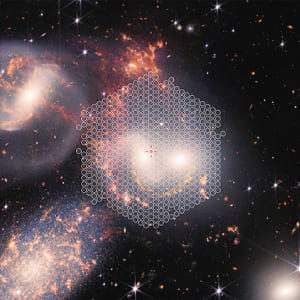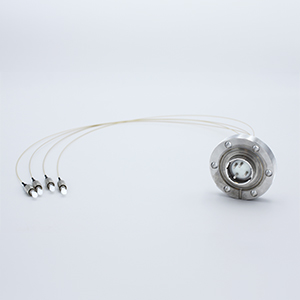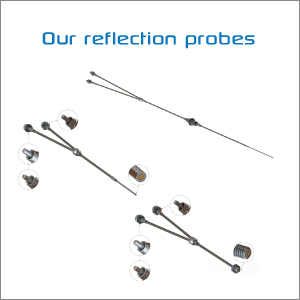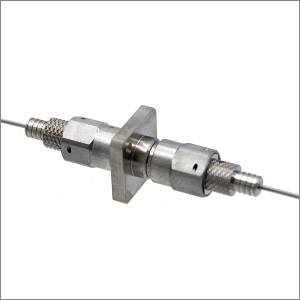WeaveNew generation
WEAVE (WHT Enhanced Area Velocity Explorer), is a multifiber spectrograph of the William Herschel Telescope at the Roque de los Muchachos Observatory, located in the Canary Islands.
In December 2022, it collected its first light from the Stephan Quintet, a group of 5 galaxies, located 280 million light-years from planet Earth, in the constellation Pegasus.

Observation of two galaxies colliding
Thanks to its three fiber systems (MOS, mIFUS and LIFU), the spectrograph is capable of simultaneously scanning nearly 1000 stars or galaxies. The 547 optical fibers of the LIFU, placed in a hexagon, allowed to observe the movement of the galaxies NGC 7318a and NGC 7318b, moving at a speed of 800 kilometers per second and colliding.
Gavin Dalton, WEAVE principal investigator, said, “The wealth of complexity revealed in this way by a single detailed observation of this pair of nearby galaxies provides a glimpse into the interpretation of the millions of spectra that WEAVE will obtain from galaxies in the distant Universe, and provides an excellent illustration of the power and flexibility of the WEAVE facility.”
A mainly French contribution!
This project required the international contribution of many companies and organizations, but especially French with the support of the CNRS, the Observatoire de Paris-PSL, the Observatoire de la Côte d’Azur and the GEPI.
SEDI-ATI Fibres Optiques has worked on the design of the LIFU and a MOS through the design, implementation of manufacturing processes and assembly of fiber assemblies.
With our multiple contributions in the design of complex fiber assemblies for large instruments such as GIRAFFE, MEGARA or MOONS, we brought our expertise in the choice of materials, fibers, and protective sheaths. And we manufactured and delivered 1 LIFU compacted in hexagonal module and 1 MOS composed of 40 strands of 24 fibers of 33 meters long, which represents in total a work with more than 1,500 optical fibers on nearly 50 kilometers.
The whole system was designed and assembled with the assurance of maintaining an optimal information transmission rate with a remarkable rate of damaged channels lower than 10-3.
To go further, discover our case study “WEAVE: the multi-fiber spectrograph that will unravel great mysteries of the Universe”
3 observation modes
The spectrograph’s optical fibers lead to three specific geometries:
- 2 MOS (multi-object spectroscopy) of 1008+960 fibers, for the observation of individual point objects,
- 20 mIFUs (mini integral-field units) of 37 fibers each, for the observation of extended objects with small field integrals,
- 1 LIFU (large integral-field unit) of 547 fibers, for the observation of a large integral field,




